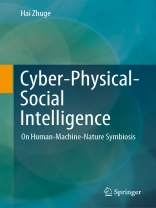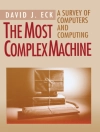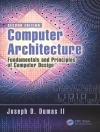This book explores next-generation artificial intelligence based on the symbiosis between humans, machines and nature, including the rules and emerging patterns of recognition, and the integration and optimization of various flows through cyberspace, physical space and social space. It unveils a reciprocal human-machine-nature symbiotic mechanism together with relevant rules on structuring and evolving reality, and also proposes a multi-dimensional space for modelling reality and managing the methodologies for exploring reality. As such it lays the foundation for the emerging research area cyber-physical-social intelligence. Inspiring researchers and university students to explore the development of intelligence and scientific methodology, it is intended for researchers and broad readers with a basic understanding of computer science and the natural sciences.
Next-generation artificial intelligence will extend machine intelligence and human intelligence to cyber-physical-social intelligence rendered by various interactions in cyberspace, physical space and social space. With the transformational development of science and society, a multi-dimensional reality is emerging and evolving, leading to the generation and development of various spaces obeying different principles. A fundamental scientific challenge is uncovering the essential mechanisms and principles that structure and evolve the reality emerging and evolving along various dimensions. Meeting this challenge requires identifying the basic relations between humans, machines and nature in order to reveal the cyber-physical-social principles.
قائمة المحتويات
1. Introduction.- a. Where are we?.- b. Symbiosis.- c. Man-Computer Symbiosis.- d. Human-Machine-Nature Symbiosis.- 2. Necessity of Studying Human-Machine-Nature Symbiosis and Principles.- 3. Competition and Symbiosis in Cyber-Physical Society. 4. Cyber-Physical-Social Communities.- 5. Symbiosis among Spaces.- 6. Material, Information and Knowledge Flows.- 7. Influence through Human-Machine-Nature Symbiosis.- 8. Cyber-Physical-Socioeconomic Computing Model for Symbiosis.- 9. Symbiosis between Computing and Thinking.- 10. Computing between Known and Unknown.- 11. Perspective.- 12. Application Analysis: Construct Symbiotic Network to Gain Value.- 13. Application Analysis: Recommendation of Things in Cyber-Physical Society.- 14. Symbiosis through Material, Data and Information Flows.- 15. Application Analysis: From Self-Programming to Human-Machine-Nature Symbiosis.- 16. Application Analysis: Information System Evolution.- 17. Application Analysis: Human-Machine-Nature Symbiotic Lifecycle Medicine.- 18. Conclusion.- References.
عن المؤلف
Hai Zhuge is an ACM (Association of Computer Machinery) Distinguished Scientist and a Fellow of the British Computer Society. He has made a systematic contribution to semantics and knowledge modelling through fundamental research on the Semantic Link Network and the Resource Space Model based on multi-dimensional methodology. He is leading research on cyber-physical-social intelligence using methodological, theoretical and technical innovations. As an ACM Distinguished Speaker, he has delivered 20 keynotes at international conferences and invited lectures at universities in various countries. As a Professor, he is head of an international research network consisting of the Guangzhou University, the Key Laboratory of Intelligent Information Processing at the Institute of Computing Technology in Chinese Academy of Sciences, the University of Chinese Academy of Sciences, and the System Analytics Research Institute at Aston University. He was a Distinguished Visiting Fellow of the Royal Academy of Engineering. He is the author of four monographs: Cyber-Physical-Social Intelligence on Human-Machine-Nature Symbiosis (Springer, 2019), Multi-Dimensional Summarization in Cyber-Physical Society (Morgan Kaufmann, 20016), The Knowledge Grid: Toward Cyber-Physical Society (World Scientific, 2012), and The Web Resource Space Model (Springer, 2008). He is currently as an Associate Editor of IEEE Intelligent Systems.












